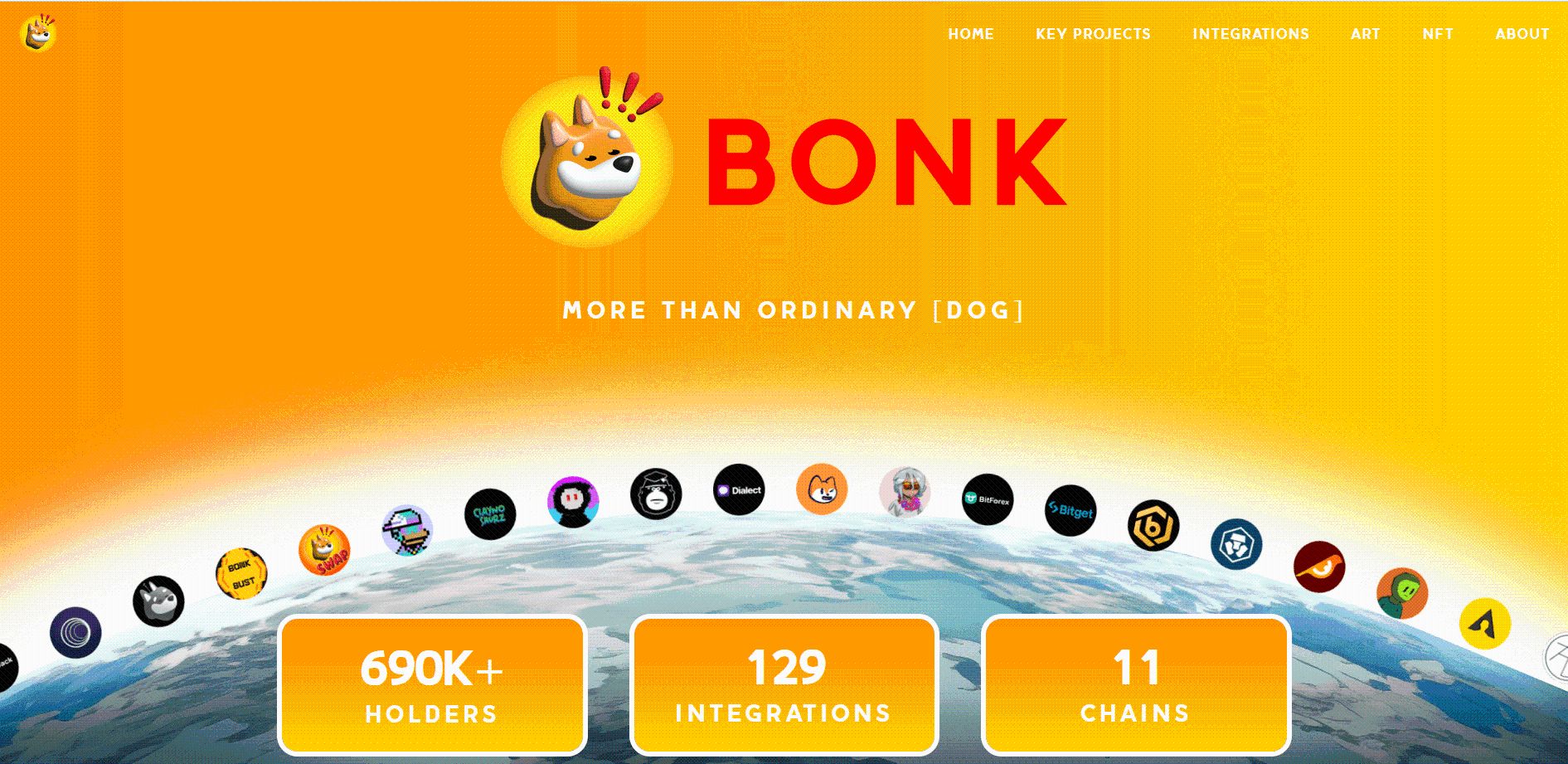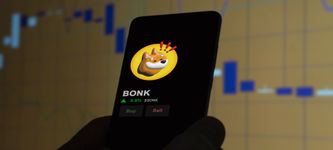Bitget: Auf Platz 4 im weltweiten täglichen Handelsvolumen!
BTC-Marktanteil61.41%
Neue Listings auf Bitget : Pi Network
BTC/USDT$83822.57 (+2.12%)Angst und Gier Index34(Angst)
Altcoin-Saison-Index:0(Bitcoin-Saison)
In Pre-Market gelistete CoinsPAWS,WCTGesamtnettozufluss des Bitcoin-ETF -$60.6M (1T); +$218.9M (7T).Willkommensgeschenkpaket für neue Nutzer im Wert von 6.200 USDT.Jetzt beanspruchen
Handeln Sie jederzeit und überall mit der Bitget-App. Jetzt herunterladen
Bitget: Auf Platz 4 im weltweiten täglichen Handelsvolumen!
BTC-Marktanteil61.41%
Neue Listings auf Bitget : Pi Network
BTC/USDT$83822.57 (+2.12%)Angst und Gier Index34(Angst)
Altcoin-Saison-Index:0(Bitcoin-Saison)
In Pre-Market gelistete CoinsPAWS,WCTGesamtnettozufluss des Bitcoin-ETF -$60.6M (1T); +$218.9M (7T).Willkommensgeschenkpaket für neue Nutzer im Wert von 6.200 USDT.Jetzt beanspruchen
Handeln Sie jederzeit und überall mit der Bitget-App. Jetzt herunterladen
Bitget: Auf Platz 4 im weltweiten täglichen Handelsvolumen!
BTC-Marktanteil61.41%
Neue Listings auf Bitget : Pi Network
BTC/USDT$83822.57 (+2.12%)Angst und Gier Index34(Angst)
Altcoin-Saison-Index:0(Bitcoin-Saison)
In Pre-Market gelistete CoinsPAWS,WCTGesamtnettozufluss des Bitcoin-ETF -$60.6M (1T); +$218.9M (7T).Willkommensgeschenkpaket für neue Nutzer im Wert von 6.200 USDT.Jetzt beanspruchen
Handeln Sie jederzeit und überall mit der Bitget-App. Jetzt herunterladen

Coin bezogen
Preis-Rechner
Preisverlauf
Preisprognose
Technische Analyse
Leitfaden zum Kauf von Coins
Kategorie Krypto
Gewinn-Rechner

Bonk on ETH Kurs BONK
Nicht gelistet
Quotierte Währung:
EUR
Die Daten werden von Drittanbietern bezogen. Diese Seite und die zur Verfügung gestellten Informationen befürworten keine bestimmte Kryptowährung. Möchten Sie mit gelisteten Coins traden? Hier klicken
€0.{9}4902-1.49%1D
Preisübersicht
Zuletzt aktualisiert 2025-04-01 08:18:15(UTC+0)
Marktkapitalisierung:--
Vollständig verwässerte Marktkapitalisierung:--
24S-Volumen:--
24S-Volumen / Marktkapitalisierung:0.00%
24S Hoch:€0.{9}4908
24S Tief:€0.{9}4802
Allzeithoch:€0.{7}5454
Allzeittief:€0.{9}4802
Tokens im Umlauf:-- BONK
Gesamtangebot:
100,000,000,000,000BONK
Zirkulationsrate:0.00%
Max. Angebot:
--BONK
Preis in BTC:0.{14}6339 BTC
Preis in ETH:0.{6}1192 ETH
Preis bei BTC-Marktkapitalisierung:
--
Preis bei ETH-Marktkapitalisierung:
--
Verträge:
0x4fba...edc9b64(Ethereum)
Mehr
Wie denken Sie heute über Bonk on ETH?
Hinweis: Diese Information ist nur als Referenz gedacht.
Preis von Bonk on ETH heute
Der aktuelle Kurs von Bonk on ETH liegt heute bei €0.{9}4902 pro (BONK / EUR) mit einer aktuellen Marktkapitalisierung von €0.00 EUR. Das 24-Stunden-Trading-Volumen beträgt €0.00 EUR. BONK bis EUR wird der Preis in Echtzeit aktualisiert. Bonk on ETH ist -1.49% in den letzten 24 Stunden. Es hat 0 Tokens im Umlauf.
Was ist der höchste Preis von BONK?
BONK hat ein Allzeithoch (ATH) von €0.{7}5454, aufgezeichnet am 2024-05-11.
Was ist der niedrigste Preis von BONK?
BONK hat ein Allzeittief (ATL) von €0.{9}4802, aufgezeichnet am 2025-03-30.
Bonk on ETH Preisprognose
Wie hoch wird der Preis von BONK in 2026 sein?
Auf Grundlage des Modells zur Vorhersage der vergangenen Kursentwicklung von BONK wird der Preis von BONK in 2026 voraussichtlich €0.{9}6415 erreichen.
Wie hoch wird der Preis von BONK in 2031 sein?
In 2031 wird der Preis von BONK voraussichtlich um +40.00% steigen. Am Ende von 2031 wird der Preis von BONK voraussichtlich €0.{8}1067 erreichen, mit einem kumulativen ROI von +117.66%.
Bonk on ETH Preisverlauf (EUR)
Der Preis von Bonk on ETH ist -96.32% über das letzte Jahr. Der höchste Preis von in EUR im letzten Jahr war €0.{7}5454 und der niedrigste Preis von in EUR im letzten Jahr war €0.{9}4802.
ZeitPreisänderung (%) Niedrigster Preis
Niedrigster Preis Höchster Preis
Höchster Preis 
 Niedrigster Preis
Niedrigster Preis Höchster Preis
Höchster Preis 
24h-1.49%€0.{9}4802€0.{9}4908
7d-10.32%€0.{9}4802€0.{9}5512
30d-8.15%€0.{9}4802€0.{9}6874
90d-81.50%€0.{9}4802€0.{8}2671
1y-96.32%€0.{9}4802€0.{7}5454
Allzeit-96.32%€0.{9}4802(2025-03-30, Gestern )€0.{7}5454(2024-05-11, 325 Tag(e) her )
Bonk on ETH Markt-Informationen
Bonk on ETH Verlauf der Marktkapitalisierung
Bonk on ETH Bestände nach Konzentration
Whales
Investoren
Einzelhandel
Bonk on ETH Adressen nach Haltezeit
Inhaber
Cruiser
Trader
Live coinInfo.name (12) Preis-Chart

Bonk on ETH Bewertungen
Durchschnittliche Bewertungen in der Community
4.4
Dieser Inhalt dient nur zu Informationszwecken.
BONK in lokaler Währung
1 BONK zu MXN$01 BONK zu GTQQ01 BONK zu CLP$01 BONK zu HNLL01 BONK zu UGXSh01 BONK zu ZARR01 BONK zu TNDد.ت01 BONK zu IQDع.د01 BONK zu TWDNT$01 BONK zu RSDдин.01 BONK zu DOP$01 BONK zu MYRRM01 BONK zu GEL₾01 BONK zu UYU$01 BONK zu MADد.م.01 BONK zu OMRر.ع.01 BONK zu AZN₼01 BONK zu KESSh01 BONK zu SEKkr01 BONK zu UAH₴0
- 1
- 2
- 3
- 4
- 5
Zuletzt aktualisiert 2025-04-01 08:18:15(UTC+0)
Bonk on ETH Nachrichten

BONK übernimmt offiziell Kunstmarktplatz Exchange Art
Cryptomonday•2025-03-28 06:33

SonicCS 2.0: Blitzschneller Konsens, schlanker Speicher
Cryptomonday•2025-03-28 06:33

Der auf Solana basierende Memecoin BONK hat Exchange Art übernommen
Coinjournal•2025-03-27 22:55

BONK kündigt Übernahme der Kunstmarkt-Plattform Exchange an
Bitget•2025-03-27 14:44

Bonk Kursanstieg um 28%: Ist $0.000017 in Reichweite?
Cryptomonday•2025-03-24 04:55
Mehr kaufen
FAQ
Wie hoch ist der aktuelle Preis von Bonk on ETH?
Der Live-Kurs von Bonk on ETH ist €0 pro (BONK/EUR) mit einer aktuellen Marktkapitalisierung von €0 EUR. Der Wert von Bonk on ETH unterliegt aufgrund der kontinuierlichen 24/7-Aktivität auf dem Kryptomarkt häufigen Schwankungen. Der aktuelle Preis von Bonk on ETH in Echtzeit und seine historischen Daten sind auf Bitget verfügbar.
Wie hoch ist das 24-Stunden-Trading-Volumen von Bonk on ETH?
In den letzten 24 Stunden beträgt das Trading-Volumen von Bonk on ETH €0.00.
Was ist das Allzeithoch von Bonk on ETH?
Das Allzeithoch von Bonk on ETH ist €0.{7}5454. Dieses Allzeithoch ist der höchste Preis für Bonk on ETH seit seiner Einführung.
Kann ich Bonk on ETH auf Bitget kaufen?
Ja, Bonk on ETH ist derzeit in der zentralen Börse von Bitget verfügbar. Ausführlichere Anweisungen finden Sie in unserem hilfreichen Wie man kauft Leitfaden.
Kann ich mit Investitionen in Bonk on ETH ein regelmäßiges Einkommen erzielen?
Natürlich bietet Bitget einen strategische Trading-Plattform, mit intelligenten Trading-Bots, um Ihre Trades zu automatisieren und Gewinne zu erzielen.
Wo kann ich Bonk on ETH mit der niedrigsten Gebühr kaufen?
Wir freuen uns, ankündigen zu können, dass strategische Trading-Plattform jetzt auf der Bitget-Börse verfügbar ist. Bitget bietet branchenführende Handelsgebühren und -tiefe, um profitable Investitionen für Trader zu gewährleisten.
Wo kann ich Krypto kaufen?
Videobereich - schnelle Verifizierung, schnelles Trading

Wie Sie die Identitätsverifizierung auf Bitget durchführen und sich vor Betrug schützen
1. Loggen Sie sich bei Ihrem Bitget-Konto ein.
2. Wenn Sie neu bei Bitget sind, schauen Sie sich unser Tutorial an, wie Sie ein Konto erstellen.
3. Bewegen Sie den Mauszeiger über Ihr Profilsymbol, klicken Sie auf "Unverifiziert" und dann auf "Verifizieren".
4. Wählen Sie Ihr Ausstellungsland oder Ihre Region und den Ausweistyp und folgen Sie den Anweisungen.
5. Wählen Sie je nach Präferenz "Mobile Verifizierung" oder "PC".
6. Geben Sie Ihre Daten ein, legen Sie eine Kopie Ihres Ausweises vor und machen Sie ein Selfie.
7. Reichen Sie Ihren Antrag ein, und voilà, Sie haben die Identitätsverifizierung abgeschlossen!
Kryptowährungs-Investitionen, einschließlich des Kaufs von Bonk on ETH online über Bitget, unterliegen dem Marktrisiko. Bitget bietet Ihnen einfache und bequeme Möglichkeiten, Bonk on ETH zu kaufen, und wir versuchen unser Bestes, um unsere Nutzer über jede Kryptowährung, die wir auf der Börse anbieten, umfassend zu informieren. Wir sind jedoch nicht verantwortlich für die Ergebnisse, die sich aus Ihrem Bonk on ETH Kauf ergeben können. Diese Seite und alle darin enthaltenen Informationen sind keine Empfehlung für eine bestimmte Kryptowährung.
Bitget Insights

Crypto_inside
1S
What is IQ..🤔🤔??
Intelligence Quotient (IQ) is a score derived from standardized tests designed to measure human intelligence. IQ tests assess various cognitive abilities, such as:
Components of IQ Tests:
1. Verbal Comprehension: Measures ability to understand and use language.
2. Perceptual Reasoning: Assesses ability to reason, form concepts, and solve problems.
3. Working Memory: Evaluates ability to hold and manipulate information in short-term memory.
4. Processing Speed: Measures ability to quickly and accurately process visual information.
IQ Score Interpretation:
1. Average IQ: 85-115 (68% of population)
2. Above Average IQ: 116-130 (16% of population)
3. Gifted IQ: 131-145 (2% of population)
4. Highly Gifted IQ: 146-160 (0.1% of population)
5. Profoundly Gifted IQ: 161-175 (0.01% of population)
Criticisms and Limitations of IQ Tests:
1. Cultural Bias: IQ tests may favor certain cultural or socioeconomic groups.
2. Narrow Scope: IQ tests only measure specific aspects of intelligence.
3. Context-Dependent: IQ scores can be influenced by environmental factors.
4. Oversimplification: IQ scores can oversimplify complex cognitive abilities.
Types of Intelligence:
1. Fluid Intelligence: Ability to reason, think abstractly, and solve problems.
2. Crystallized Intelligence: Ability to use learned knowledge and experience.
3. Emotional Intelligence: Ability to recognize and understand emotions.
Notable Theories and Models:
1. Gardner's Multiple Intelligences: Proposes multiple types of intelligence, such as linguistic, spatial, and bodily-kinesthetic.
2. Sternberg's Triarchic Theory: Suggests three components of intelligence: analytical, creative, and practical.
IQ tests provide a limited snapshot of cognitive abilities and should not be considered the sole measure of intelligence or potential.
Thank you...🙂
$BTC $ETH $SOL $PI $AI $XRP $BGB $BNB $ONDO $DOGE $SHIB $BONK $FLOKI $U2U $WUF $PARTI $WHY $SUNDOG
SUNDOG-1.50%
BTC+1.54%

Crypto_inside
2S
Machine learning ❌ Traditional learning. 🧐😵💫
Machine learning and traditional learning are two distinct approaches to learning and problem-solving.
Traditional Learning:
1. Rule-based: Traditional learning involves explicit programming and rule-based systems.
2. Human expertise: Traditional learning relies on human expertise and manual feature engineering.
3. Fixed models: Traditional learning uses fixed models that are not updated automatically.
Machine Learning:
1. Data-driven: Machine learning involves learning from data and improving over time.
2. Algorithmic: Machine learning relies on algorithms that can learn from data and make predictions.
3. Adaptive models: Machine learning uses adaptive models that can update automatically based on new data.
Key Differences:
1. Learning style: Traditional learning is rule-based, while machine learning is data-driven.
2. Scalability: Machine learning can handle large datasets and complex problems, while traditional learning is limited by human expertise.
3. Accuracy: Machine learning can achieve higher accuracy than traditional learning, especially in complex domains.
Advantages of Machine Learning:
1. Improved accuracy: Machine learning can achieve higher accuracy than traditional learning.
2. Increased efficiency: Machine learning can automate many tasks, freeing up human experts for more complex tasks.
3. Scalability: Machine learning can handle large datasets and complex problems.
Disadvantages of Machine Learning:
1. Data quality: Machine learning requires high-quality data to learn effectively.
2. Interpretability: Machine learning models can be difficult to interpret and understand.
3. Bias: Machine learning models can perpetuate biases present in the training data.
When to Use Machine Learning:
1. Complex problems: Machine learning is well-suited for complex problems that require pattern recognition and prediction.
2. Large datasets: Machine learning can handle large datasets and identify trends and patterns.
3. Automating tasks: Machine learning can automate many tasks, freeing up human experts for more complex tasks.
When to Use Traditional Learning:
1. Simple problems: Traditional learning is well-suited for simple problems that require explicit programming and rule-based systems.
2. Small datasets: Traditional learning is suitable for small datasets where machine learning may not be effective.
3. Human expertise: Traditional learning relies on human expertise and manual feature engineering, making it suitable for domains where human expertise is essential.
Thank you...🙂
$BTC $ETH $SOL $PI $AI $XAI $BGB $BNB $DOGE $DOGS $SHIB $BONK $MEME $XRP $ADA $U2U $WUF $PARTI $WHY
BTC+1.54%
BGB+3.08%

Crypto_inside
2S
What is Q-learning...🤔🤔??
Q-learning is a type of reinforcement learning algorithm used in machine learning and artificial intelligence. It's a model-free, off-policy learning algorithm that helps agents learn to make decisions in complex, uncertain environments.
Key Components:
1. Agent: The decision-maker that interacts with the environment.
2. Environment: The external system with which the agent interacts.
3. Actions: The decisions made by the agent.
4. Rewards: The feedback received by the agent for its actions.
5. Q-function: A mapping from states and actions to expected rewards.
How Q-learning Works:
1. Initialization: The agent starts with an arbitrary Q-function.
2. Exploration: The agent selects an action and observes the resulting state and reward.
3. Update: The agent updates its Q-function based on the observed reward and the expected reward for the next state.
4. Exploitation: The agent chooses the action with the highest Q-value for the current state.
Advantages:
1. Simple to implement: Q-learning is a straightforward algorithm to understand and code.
2. Effective in complex environments: Q-learning can handle complex, dynamic environments with many states and actions.
Disadvantages:
1. Slow convergence: Q-learning can require many iterations to converge to an optimal policy.
2. Sensitive to hyperparameters: The performance of Q-learning is highly dependent on the choice of hyperparameters.
Q-learning is a powerful algorithm for reinforcement learning, but it can be challenging to tune and may not always converge to an optimal solution.
Thank you...🙂
$BTC $ETH $SOL $PI $AI $XAI $XRP $BGB $BNB $DOGE $DOGS $SHIB $BONK $FLOKI $U2U $WUF $WHY $SUNDOG $COQ $PEPE
SUNDOG-1.50%
BTC+1.54%

Crypto_inside
2S
What is Machine learning..🤔🤔??
Machine learning is a subset of artificial intelligence (AI) that involves training algorithms to learn from data and make predictions, decisions, or recommendations without being explicitly programmed.
Key Characteristics:
1. Learning from data: Machine learning algorithms learn patterns and relationships in data.
2. Improving over time: Machine learning models improve their performance as they receive more data.
3. Making predictions or decisions: Machine learning models make predictions, decisions, or recommendations based on the learned patterns.
Types of Machine Learning:
1. Supervised Learning: The algorithm learns from labeled data to make predictions.
2. Unsupervised Learning: The algorithm learns from unlabeled data to identify patterns.
3. Reinforcement Learning: The algorithm learns through trial and error to achieve a goal.
4. Semi-supervised Learning: The algorithm learns from a combination of labeled and unlabeled data.
5. Deep Learning: A subset of machine learning that uses neural networks with multiple layers.
Machine Learning Applications:
1. Image Recognition: Image classification, object detection, and facial recognition.
2. Natural Language Processing (NLP): Text classification, sentiment analysis, and language translation.
3. Speech Recognition: Speech-to-text and voice recognition.
4. Predictive Analytics: Forecasting, regression, and decision-making.
5. Recommendation Systems: Personalized product recommendations.
Machine Learning Algorithms:
1. Linear Regression: Linear models for regression tasks.
2. Decision Trees: Tree-based models for classification and regression.
3. Random Forest: Ensemble learning for classification and regression.
4. Support Vector Machines (SVMs): Linear and non-linear models for classification and regression.
5. Neural Networks: Deep learning models for complex tasks.
Machine Learning Tools and Frameworks:
1. TensorFlow: Open-source deep learning framework.
2. PyTorch: Open-source deep learning framework.
3. Scikit-learn: Open-source machine learning library.
4. Keras: High-level neural networks API.
Machine learning has numerous applications across industries, including healthcare, finance, marketing, and more. Its ability to learn from data and improve over time makes it a powerful tool for solving complex problems.
Thank you...🙂
$BTC $ETH $SOL $PI $AI $XAI $BGB $BNB $DOGE $SHIB $FLOKI $BONK $U2U $WUF $WHY $SUNDOG $PARTI $XRP
SUNDOG-1.50%
BTC+1.54%

Crypto_inside
14S
Price action ❌ Technical analysis. 🧐😵💫
Price action and technical analysis are two related but distinct concepts in trading and investing.
Price Action:
1. Focuses on raw price data: Price action involves analyzing the price movement of a security over time.
2. No indicators or overlays: Price action traders rely solely on the price chart, without using technical indicators or overlays.
3. Emphasis on market structure: Price action traders study the structure of the market, including trends, reversals, and breakouts.
Technical Analysis:
1. Uses indicators and overlays: Technical analysis involves using various indicators and overlays, such as moving averages, RSI, and Bollinger Bands, to analyze price data.
2. *Focuses on patterns and trends*: Technical analysis identifies patterns and trends in price data, using indicators and overlays to confirm or contradict the analysis.
3. *Includes various methods*: Technical analysis encompasses various methods, including chart patterns, trend analysis, and momentum analysis.
Key Differences:
1. Use of indicators: Price action traders do not use indicators, while technical analysts rely heavily on them.
2. Focus: Price action focuses on raw price data and market structure, while technical analysis focuses on patterns, trends, and indicators.
3. Approach: Price action trading is often more discretionary and subjective, while technical analysis can be more systematic and rule-based.
Similarities:
1. Both analyze price data: Both price action and technical analysis involve analyzing price data to make trading decisions.
2. Both aim to identify trends and patterns: Both approaches aim to identify trends, patterns, and other market structures to inform trading decisions.
3. Both require skill and experience: Both price action and technical analysis require skill, experience, and continuous learning to master.
In summary, while price action and technical analysis share some similarities, they differ in their approach, focus, and use of indicators. Price action traders rely solely on raw price data and market structure, while technical analysts use indicators and overlays to identify patterns and trends.
Thank you...🙂
$BTC $ETH $SOL $PI $XRP $ADA $AI $DOGE $SHIB $FLOKI $BONK $BGB $BNB $U2U $PARTI $WUF $WHY $SUNDOG $DOGS $GEEK
SUNDOG-1.50%
BTC+1.54%
Verwandte Assets
Beliebte Kryptowährungen
Eine Auswahl der 8 wichtigsten Kryptowährungen nach Marktkapitalisierung.
Kürzlich hinzugefügt
Die zuletzt hinzugefügten Kryptowährungen.
Vergleichbare Marktkapitalisierung
Von allen Bitget-Assets sind diese 8 in Bezug auf die Marktkapitalisierung am nächsten an Bonk on ETH dran.

































